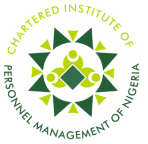 |
Ebola Outbreak - Travel and Transport Risk Assessment: WHO Issues Recommendations for Public Health Authorities and Transport SectorPosted: 11 years ago |
The World Health Organization has highlighted facts and precautions that could help in actualising an Ebola free environment for travellers and health workers in Nigeria, Africa and around the Globe. In a recent release, the World Health Organisation (WHO) issued the following advisory to facilitate a better understanding of the disease and assist travellers in keeping themselves safe. 1. Summary of epidemiological facts and experience
2. Risk of EVD for different groups 2.1. Tourists and businessmen/women returning from affected areas in a country The risk of a tourist or businessman/woman becoming infected with Ebola virus during a visit to the affected areas and developing disease after returning is extremely low, even if the visit included travel to the local areas from which primary cases have been reported. Transmission requires direct contact with blood, secretions, organs or other body fluids of infected living or dead persons or animal, all unlikely exposures for the average traveller. Tourists are in any event advised to avoid all such contacts. 2.2. Visiting families and relativesThe risk for travellers visiting friends and relatives in affected countries is similarly low, unless the traveller has direct physical contact with a sick or dead person or animal infected with Ebola virus. In such a case, contact tracing should confirm the exposure and prevent further spread of the disease through monitoring the exposed traveller. 2.3. Patients travelling with symptoms and fellow travellersThere is a possibility that a person who had been exposed to Ebola virus and developed symptoms may board a commercial flight, or other mode of transport, without informing the transport company of his status. It is highly likely that such patients would seek immediate medical attention upon arrival, especially if well informed, and then should be isolated to prevent further transmission. Although the risk to fellow travellers in such a situation is very low, contact tracing is recommended in such circumstances. 2.4. Risk for health care workers posted in affected areas There is a risk for healthcare workers and volunteers, especially if involved in caring for EVD patients. However, if the recommended level of precaution for such settings is implemented, transmission of the disease should be prevented. The risk level can be considered very low to low unless these precautions are not followed, e.g. no personal protective equipment, needle stick injury etc. 3. Recommendations for public health authorities and transport sectors 3.1. Recommendations for countries 3.1.1. Raise the awareness and knowledge of travellers Travellers leaving for or arriving in an area where EVD is occurring should be provided at points of entry (e.g. in airports or ports on boarding or arrival areas or at ground crossing points) with information on the potential risk of EVD (see proposed template below). Information should also be spread among communities that may include cross-border travellers and near all relevant international borders. The information provided should emphasize that travellers or residents in the affected areas of countries can minimize any risk of getting infected if they avoid:
Travellers should be informed where to obtain medical assistance at the destination and who to inform (e.g. through hotline telephone numbers). Returning visitors from the affected areas should be alerted that if they develop infectious disease symptoms (such as fever, weakness, muscle pain, headache, sore throat, vomiting, diarrhoea, rash, or bleeding) within three weeks after return or if they suspect that they have been exposed to Ebola virus (e.g. volunteers who worked in healthcare settings) in the affected areas, they should seek rapid medical attention and mention their recent travel to the attending physician. Template message for travellers and EVD
3.1.2. Raise the awareness and knowledge of health care providers Health care providers managing returning travellers need to question them on travel history and consider the possibility of EVD in person coming back from affected areas. A person suspected of having been exposed to Ebola virus should be evaluated regarding the risk of exposure . If the risk of exposure is considered very low, the person should be reassured, asked to monitor his/her temperature and symptoms for 21 days and seek immediately care if developing symptoms. Other pathologies (e.g. malaria) should be investigated and the patient monitored regularly. Admission to hospital in these observation phases is not necessary. Essential information to be provided to health care providers should include the following:
3.1.3. Prepare health system response In anticipation of EVD introduction, public health authorities need to:
If a case of EVD is suspected in a traveller, health care facilities attending the individual should apply the same procedures as if the EVD has already been confirmed. This includes:
Suspect cases coming from areas affected (e.g. returning travellers with symptoms) identified on an aircraft) should immediately receive medical attention and be isolated to prevent further transmission (see 3.2). 3.1.4. Screening passengers at points of entry ( ports , airports or ground crossing) is not recommended Screening of passengers at points of entry (arrival or departure) is costly and expected to have very limited impact because it is very unlikely to detect any arriving person infected with EVD. This is particularly true for EVD with its incubation period of 2 to 21 days and symptoms that are not specific. As part of this, the use of thermal scanners that rely on the presence of ‘fever’ in arriving passengers is costly, unlikely to detect any arriving person infected with EVD and is not encouraged. Travel restrictions, closure of borders at points of entry are not recommended 3.2. Recommendations for international air transport In case of a passenger presenting with symptoms compatible with EVD (fever, weakness, muscle pain, headache, sore throat, vomiting, diarrhoea, bleeding) on board of an aircraft, the following measures should be immediately considered, in accordance with operational procedures recommended by the International Air Transport Association (IATA):
Dedicated crew member to assist the ill traveller, should be using suitable personal protection equipment (PPE) such as that recommended by ICAO Universal Precaution Kit ) for dealing with the traveller and for cleaning procedures on board as needed. The possibility of transmission to other co-passengers and crew on board the aircraft should be assessed by health care providers on arrival. If the investigation concludes that the passenger has symptoms compatible with EVD and had a risk exposure in affected countries in the past 21 days, passengers as well as crew members may be at risk if they have been in direct contact with body fluids or heavily contaminated objects. The following epidemiological measures based upon proximity to the index patient should be considered: Passengers and crew with reported direct contact Passengers seated in an adjacent seat to the index patient Cleaning staff of affected aircraft section At the request of airport or port health authority, airlines may also ask some or all passengers to provide information on their itinerary and their contact details where there is a particular reason to believe they may have been exposed to infection on board of aircraft (e.g. per the ICAO public health passenger locator form)1. Additionally, countries may consider requiring arriving aircraft to complete and deliver the health part of the aircraft general declaration (in those cases where the information is not communicated to the airport of arrival while in flight) concerning persons on board with communicable diseases or sources of infection (IHR Annex 9). Passengers, crew members and cleaning staff who have been identified through contact tracing should be assessed for their specific level of exposure. Passive self-monitoring of temperature (e.g. monitoring temperature only if feeling feverish) and symptoms or active self-monitoring (e.g. by regular temperature measurement twice a day) for those at higher risk level should be continued for 21 days. These measures should also be considered if an individual, who experienced symptoms during the flight, has been identified as a suspect of EVD after arrival. 3.3. Recommendations for ships In case of a passenger presenting with symptoms compatible with EVD (fever, weakness, muscle pain, headache, sore throat, vomiting, diarrhoea, bleeding) on board of a ship, the following precautions must be applied:
In the event of a suspected diagnosis of EVD on a ship, immediate expert medical opinion should be sought and the event must be reported as soon as possible to the next port of call by the Captain. The patient should disembark in such a way as to avoid any contact with healthy travellers and wearing a surgical mask. Personnel in contact with the patient during the medical evacuation should wear a surgical protection mask and PPE. The competent authority at port may need to arrange depending on the situation: medical evacuation or special arrangements for disembarkation and hospitalization of the patient and laboratory diagnosis. Passengers, crew members and cleaning staff who have been identified through contact tracing should be assessed for their specific level of exposure. Passive self-monitoring of temperature (e.g. monitoring temperature only if feeling feverish) and symptoms or active self-monitoring (e.g. by regular temperature measurement twice a day) for those at higher risk level should be continued for 21 days. At the request of a governmental port health authority, ship operators shall also facilitate obtaining, from some or all passengers, to provide information on their itinerary and their contact details (should they need to be contacted) when there is a particular reason to believe they may have been exposed to infection on board of the ship. Additionally, countries may consider requiring arriving ships to complete and deliver the Maritime Declaration of Health (IHR Annex 8). Measures taken on board should also be noted on the IHR Ship sanitation control certificate (IHR Annex 3) Source: http://www.who.int/ith/updates/20140421/en/
|
Related News

|
Nigerian Institute of Management (Chartered) holds 2016 distinguished Lecture Series The Nigerian Institute of Management (Chartered) will on Thursday, July 14 hold its 2016 Distinguished Management Lecture Series at the Institute's Management House, in Lagos.
The President and Chairman of Council of the Institute, Prof. Munzali Jibril, in a statement said the theme of [Read more]
|
Posted: 9 years ago |

|
The Chartered Institute of Personnel Management (CIPM) is set to hold her 54th International Conference and Exhibition. According to the statement released by the Institute, this year’s conference themed: Leading People, Growing Nations, is scheduled to hold from October 17 – 2 [Read more]
|
Posted: 3 years ago |

|
ANAN, ICAN seek strategic role in economic management The Association of National Accountants of Nigeria (ANAN) and the Institute of Chartered Accountants of Nigeria (ICAN) have unfolded collaborative plans to contribute meaningfully in the development of the country. The President of ANAN, Hajia Maryam Ladi IbrahIm noted that the two bodies must &ldqu [Read more]
|
Posted: 13 years ago |


